How Long After You Shock Your Pool Can You Swim Again?
Just finished with a wonderful pool party or need to get your pool up and running because summer is around the corner? Well, before jumping in, you may want to shock your pool to make sure it is clean to use. Shocking the pool replenishes the chlorine levels in the water, making it safe to swim in. While this is a common safety measure, it is very important you let your pool rest and achieve an optimum pH level. But then, how long after you shock your pool can you swim again? This article will clear that question for you and much more.
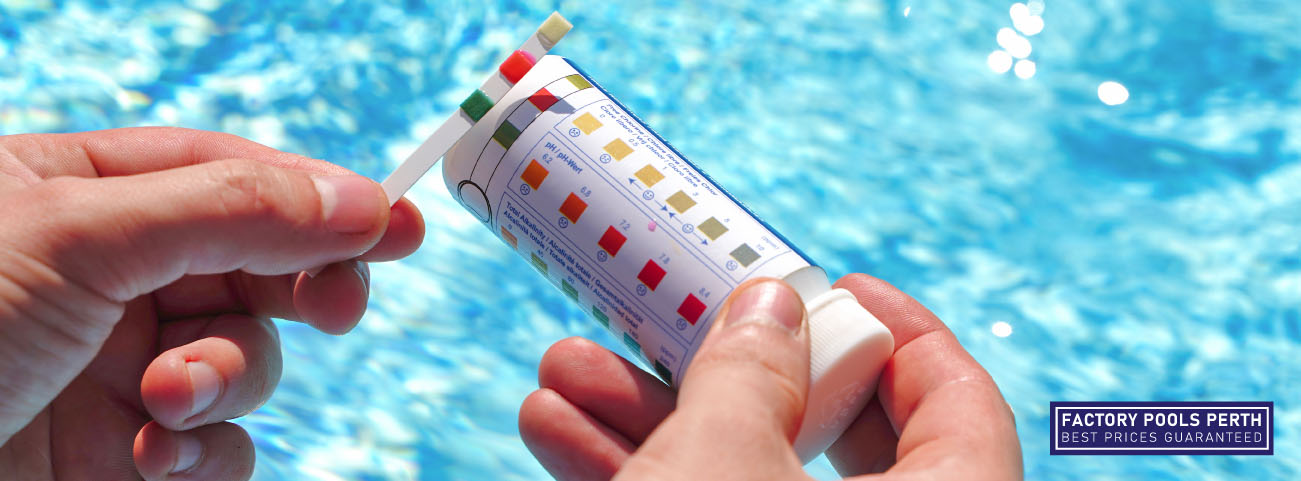
What is a Pool Shock?
Before we delve into how long a pool should rest after a shock, it is important to understand what a pool shock is. All pools gather algae, dust, urine, cosmetics, hair, perspiration, and other contaminants over a period of time. A pool shock is a very common yet important routine that disinfects the water by extinguishing algae overgrowth and harmful contaminants. It also keeps the pool odour-free.
What Does a Pool Shock Do?
Technically, a pool shock is a process where a chlorine-based or non-chlorine-based disinfectant is added in higher than usual amounts to the pool water. This helps raise the free chlorine and pH levels in it. This process destroys contaminants such as bacteria, algae, and chloramines present in the pool. Shocking a pool is a great sanitisation method that is usually done every one to two weeks. Additionally, shocking the swimming pool also lowers the workload on the pool’s filtration system. This, in turn, enhances the efficacy and life of the filtration system.
Types of Pool Shock Cleaners
There are different types of pool shock cleaners available on the market, however, they can be broadly distinguished into four common groups. Some can be added into the pool directly, while others need to be dissolved first. Here are the four main groups of pool shock cleaners:
1. Calcium Hypochlorite
This chlorine-based cleaner is widely used as a water treatment agent and is easily available in the market. It is sold in granular form and needs to be dissolved before adding it to the pool. Calcium hypochlorite is a low-priced pool shocking agent.
2. Lithium Hypochlorite
Lithium hypochlorite is a water disinfectant and works well as a pool shocking agent. This colourless and crystalline cleaning agent can be added to the pool directly as it dissolves readily in water. However, this chlorine-based cleaner is one of the more expensive options available on the market.
3. Sodium Dichlor
This water disinfectant is a widely available source of chlorine for cleaning swimming pools. It contains anywhere between 50% to 60% chlorine and is a very safe option when getting rid of algae from your pool.
4. Potassium Peroxymonosulfate
This oxidising agent stops chlorine from mixing with other elements in the pool water, which then forms contaminants. It is a non-chlorine-based pool shock agent and also a less costly option. This disinfectant does not need to be dissolved prior to adding to your pool water.
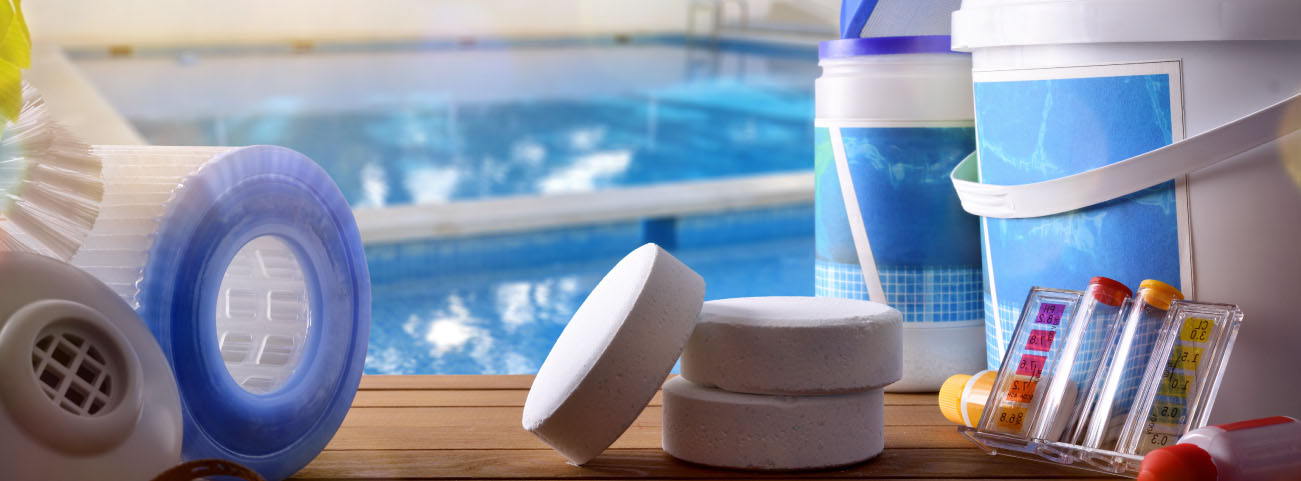
When Should You Shock Your Pool?
Choosing a suitable time to shock a swimming pool will definitely determine the outcome of a well-cleaned pool. To achieve the best results, experts say that the ideal time to shock a pool is at dusk. This will give the cleaning agent a whole night to disinfect the pool making it safe to swim. Another reason to shock your pool around sunset is that direct sunlight renders chlorine less effective. This is because the sun’s UV rays dissolve chlorine in the water at a faster pace. Alternatively, you should also shock your pool depending on the circumstances of its use. Here are some situations where you should consider shocking your swimming pool:
1. It is always a good idea to shock your pool following a brief period of disuse, such as in the case of shutdown due to maintenance or even after winters. Swimming pools, when left idle for long periods, get contaminated by leaves and dirt. Shocking the pool will get rid of any algae build-up and other contaminants.
2. Another situation that calls for pool shock is after hosting a pool party. Pool parties are awesome, but they also bring in perspiration, dirt, germs and sometimes even urine from multiple people. The best way to make sure it is safe for you to swim in it again is by shocking the pool. This will also reduce much of the load on your pool’s filtration system.
3. Bad weather in the form of stormy weather, scorching heat, heavy rainfall, and blizzards can all be bad news for your pool water. Such weather can get your pool contaminated even if it is closed. Heavy rains and gusts of wind carry materials that easily find their way into pools. This not only dirties the pool but also disrupts the pH level. A shock is an ideal way to level things out in the pool after a bout of bad weather.
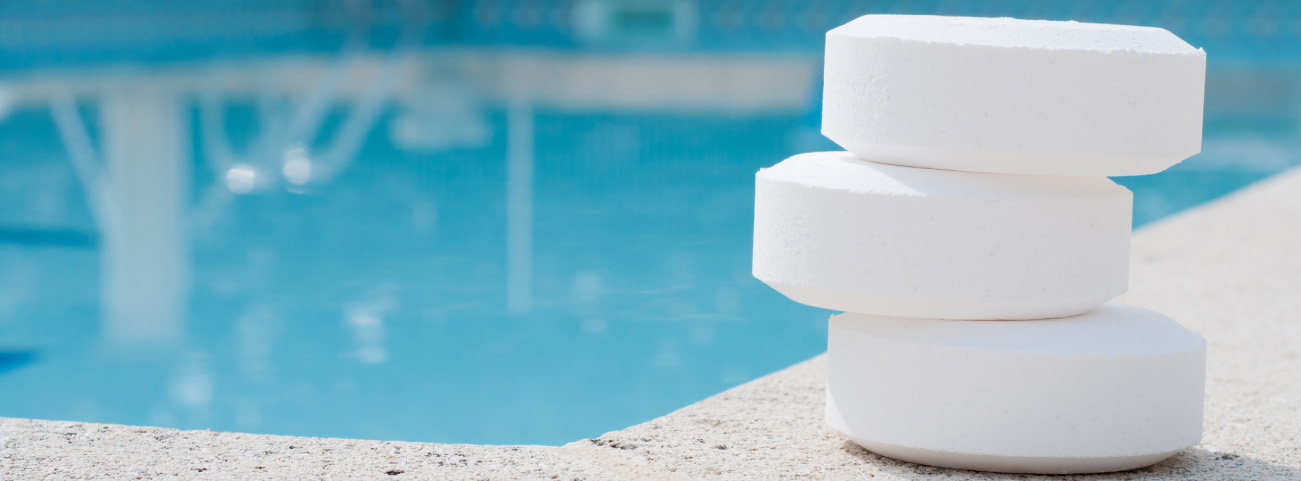
When Can I Swim After Shocking My Pool?
It is important to allow pool water to rest for a good amount of time before entering in. This is because concentrated amounts of disinfectants mixed with pool water can harm you, especially since the shocking process entails using high amounts of chemicals. Sometimes these chemicals can cause difficulty breathing, skin rashes, burning in the mouth, pain and swelling of the throat, vomiting and also stomach pain.
Conclusion
So the big question is, how long after you shock your pool can you swim again? Well, according to the general swimming pool maintenance guidelines, you should not use your pool for at least 24 hours after a pool shock. It is also important to test the pool water pH level after a shock. Ideally, the free chlorine level in your pool should be at 3 ppm or less for safe use. However, if your pool has not been used for a lengthy period, you may have to deal with an algae bloom. This would require you to have all the algae removed before the pool is safe for use.
How Long After You Shock Your Pool Can You Swim Again?
Just finished with a wonderful pool party or need to get your pool up and running because summer is around the corner? Well, before jumping in, you may want to shock your pool to make sure it is clean to use. Shocking the pool replenishes the chlorine levels in the water, making it safe to swim in. While this is a common safety measure, it is very important you let your pool rest and achieve an optimum pH level. But then, how long after you shock your pool can you swim again? This article will clear that question for you and much more.
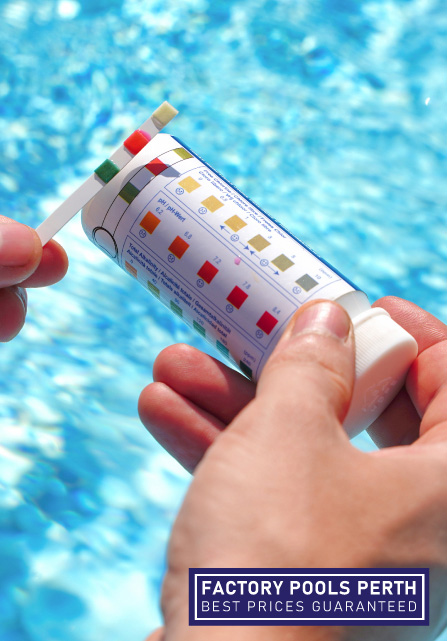
What is a Pool Shock?
Before we delve into how long a pool should rest after a shock, it is important to understand what a pool shock is. All pools gather algae, dust, urine, cosmetics, hair, perspiration, and other contaminants over a period of time. A pool shock is a very common yet important routine that disinfects the water by extinguishing algae overgrowth and harmful contaminants. It also keeps the pool odour-free.
What Does a Pool Shock Do?
Technically, a pool shock is a process where a chlorine-based or non-chlorine-based disinfectant is added in higher than usual amounts to the pool water. This helps raise the free chlorine and pH levels in it. This process destroys contaminants such as bacteria, algae, and chloramines present in the pool. Shocking a pool is a great sanitisation method that is usually done every one to two weeks. Additionally, shocking the swimming pool also lowers the workload on the pool’s filtration system. This, in turn, enhances the efficacy and life of the filtration system.
Types of Pool Shock Cleaners
There are different types of pool shock cleaners available on the market, however, they can be broadly distinguished into four common groups. Some can be added into the pool directly, while others need to be dissolved first. Here are the four main groups of pool shock cleaners:
1. Calcium Hypochlorite
This chlorine-based cleaner is widely used as a water treatment agent and is easily available in the market. It is sold in granular form and needs to be dissolved before adding it to the pool. Calcium hypochlorite is a low-priced pool shocking agent.
2. Lithium Hypochlorite
Lithium hypochlorite is a water disinfectant and works well as a pool shocking agent. This colourless and crystalline cleaning agent can be added to the pool directly as it dissolves readily in water. However, this chlorine-based cleaner is one of the more expensive options available on the market.
3. Sodium Dichlor
This water disinfectant is a widely available source of chlorine for cleaning swimming pools. It contains anywhere between 50% to 60% chlorine and is a very safe option when getting rid of algae from your pool.
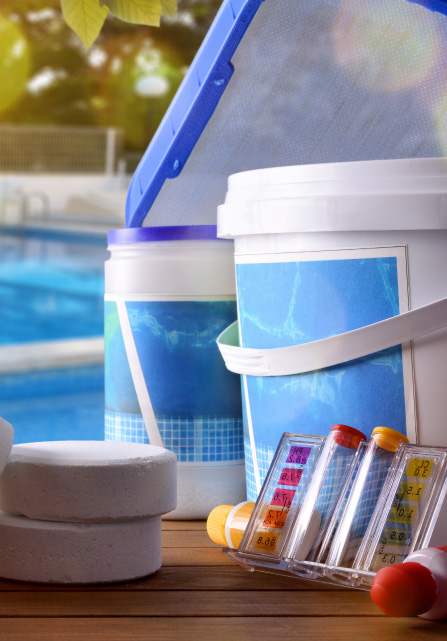
4. Potassium Peroxymonosulfate
This oxidising agent stops chlorine from mixing with other elements in the pool water, which then forms contaminants. It is a non-chlorine-based pool shock agent and also a less costly option. This disinfectant does not need to be dissolved prior to adding to your pool water.
When Should You Shock Your Pool?
Choosing a suitable time to shock a swimming pool will definitely determine the outcome of a well-cleaned pool. To achieve the best results, experts say that the ideal time to shock a pool is at dusk. This will give the cleaning agent a whole night to disinfect the pool making it safe to swim. Another reason to shock your pool around sunset is that direct sunlight renders chlorine less effective. This is because the sun’s UV rays dissolve chlorine in the water at a faster pace. Alternatively, you should also shock your pool depending on the circumstances of its use. Here are some situations where you should consider shocking your swimming pool:
1. It is always a good idea to shock your pool following a brief period of disuse, such as in the case of shutdown due to maintenance or even after winters. Swimming pools, when left idle for long periods, get contaminated by leaves and dirt. Shocking the pool will get rid of any algae build-up and other contaminants.
2. Another situation that calls for pool shock is after hosting a pool party. Pool parties are awesome, but they also bring in perspiration, dirt, germs and sometimes even urine from multiple people. The best way to make sure it is safe for you to swim in it again is by shocking the pool. This will also reduce much of the load on your pool’s filtration system.
3. Bad weather in the form of stormy weather, scorching heat, heavy rainfall, and blizzards can all be bad news for your pool water. Such weather can get your pool contaminated even if it is closed. Heavy rains and gusts of wind carry materials that easily find their way into pools. This not only dirties the pool but also disrupts the pH level. A shock is an ideal way to level things out in the pool after a bout of bad weather.
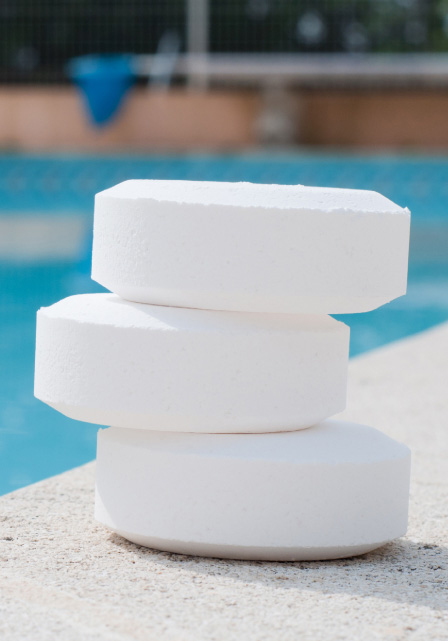
When Can I Swim After Shocking My Pool?
It is important to allow pool water to rest for a good amount of time before entering in. This is because concentrated amounts of disinfectants mixed with pool water can harm you, especially since the shocking process entails using high amounts of chemicals. Sometimes these chemicals can cause difficulty breathing, skin rashes, burning in the mouth, pain and swelling of the throat, vomiting and also stomach pain.
Conclusion
So the big question is, how long after you shock your pool can you swim again? Well, according to the general swimming pool maintenance guidelines, you should not use your pool for at least 24 hours after a pool shock. It is also important to test the pool water pH level after a shock. Ideally, the free chlorine level in your pool should be at 3 ppm or less for safe use. However, if your pool has not been used for a lengthy period, you may have to deal with an algae bloom. This would require you to have all the algae removed before the pool is safe for use.



